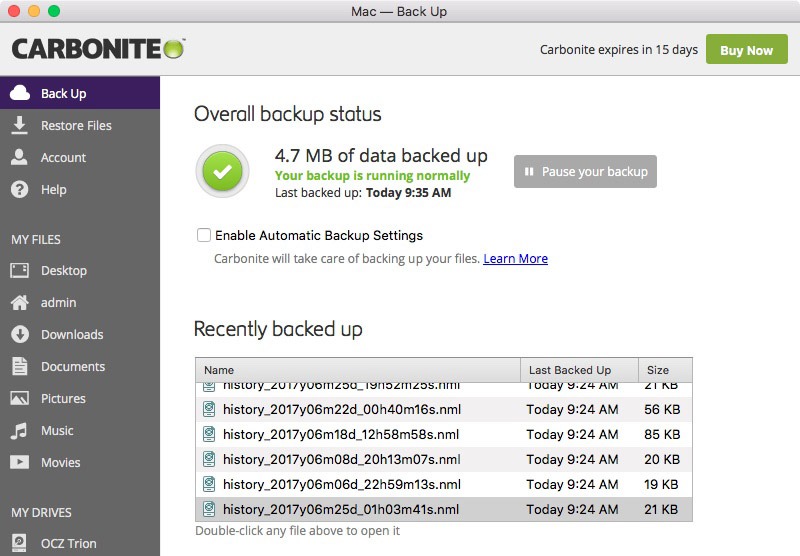

I started finding instructions how to uninstall (above), but within a few minutes, I saw CPU go down to normal with Carbonite under 10%. I presumed Carbonite had not been running, was of no value, but nevertheless using a lot of CPU, so should be uninstalled. It said it was Disconnected or Paused or something presumably doing nothing, but I saw activity monitor was showing Carbonite Daemon was using over 100% of CPU. I had almost forgotten that I had Carbonite 2.5.0 running, having a cloud backup issue on another machine, I was reminded to look at it. My Mac Mini Mid2011 2.5GHz Corei5 running 10.8.5 had been shut down for 24 hrs. I just had an experience with Carbonite that may be instructive to all. (btw - the command in step two only disables the software until the next reboot/restart) You won't see the icon move as you're typing in the password, but don't worry, if you typed it in wrong, just hit enter then try it again.Ĥ.) Delete *all* the Carbonite app files in the list above Sudo launchctl unload /Library/LaunchDaemons/.plistģ.) It will then prompt for your Mac password. In order to delete (/uninstall) the Carbonite app, it's best to first disable it (see command below), then delete the individual files/folders that make up the app. Library/PreferencePanes/Carbonite.prefPane Library/Contextual Menu Items/CarboniteCMM.bundle
CARBONITE FOR MACS FOR MAC
If not, repeat the search to determine if you overlooked something - or worse, if a running process recreated a file you are trying to delete.Ĭarbonite for Mac (Version 1.x) installs at the following locations:

Look for anything with carbonite in its name in each of these locations, if found, drag it to the Trash.Īt the conclusion of each of these search-and-destroy missions, reboot your Mac and determine if the problem is solved. Pathnames that begin with ~ (tilde) are located in your Home folder. In other words, navigate to your iMac and select its hard disk icon (usually named Macintosh HD). Pathnames that begin with / (slash) are at the root level of your hard disk. I may have forgotten other likely paths in case anyone wants to offer some more places to look please do. usr/ (this one is hidden - you will have to use the Finder's Go > "Go to Folder." to get there) OK, then consider this list of potential hiding spots:


 0 kommentar(er)
0 kommentar(er)
